Hive-mind Fortune-reader
This is roughly what the keyboard will look like on the fortune teller machine. It is needed to allow people to enter their twitter name. It's neat, but not really quite the ideal look. It could quite happily benefit from being steampunked or even just fairground-punked or something. If time allowed, I might have carved wooden keys. Actually maybe, Bakelite..
Hey ho, in the meantime it delivers the necessary, even if a little un-designed.
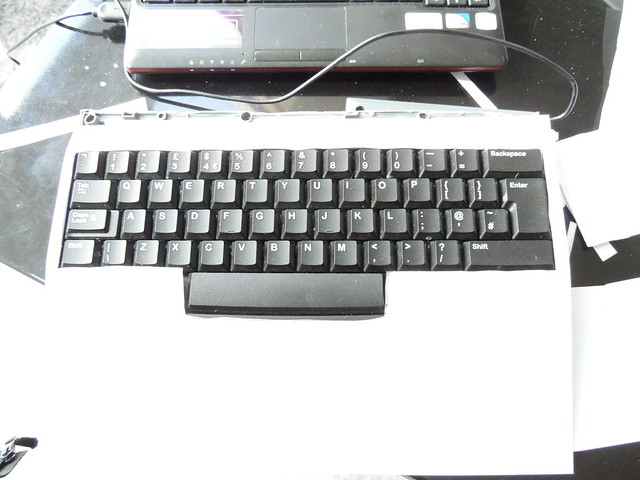
On the other hand, the good thing about testing these possibilities is that you get to hack through plastic in a generally therapeutic way...
Before and after...
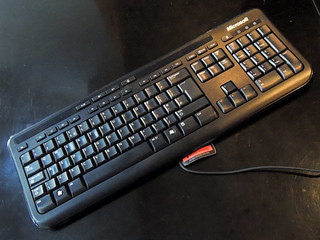
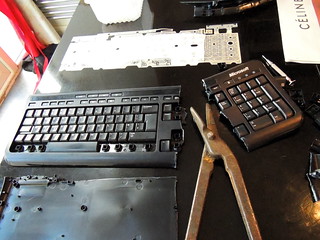
To start with, first unscrew everything, to reveal the innards...
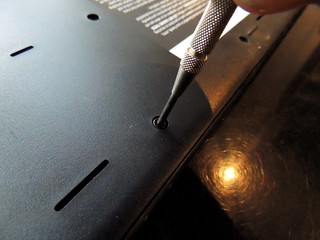
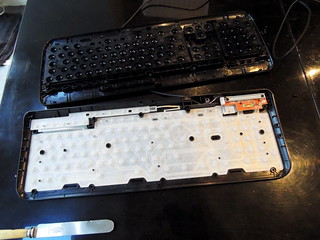
The key mechanism is great...
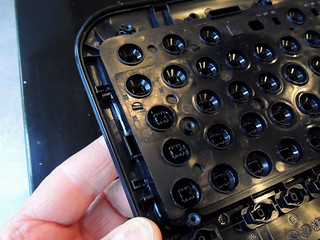
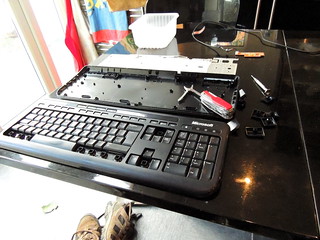
Hacking off the end of the board eighteenth-century-ship style - with a saw, then planimg it down - so enjoyable!
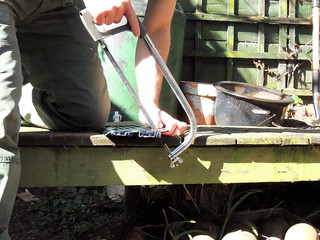
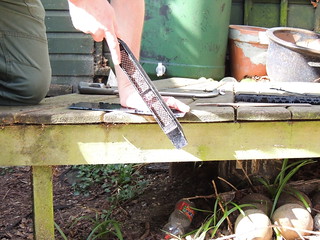
This looked pretty neat in the spring...
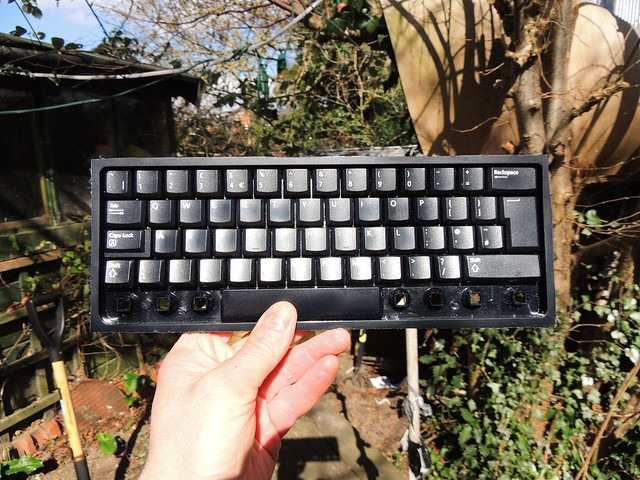
But underneath all that, there's a rather sensitive set of plastic circuit matrices. These capture the physical presses of keys and make the corresponding electronic connections
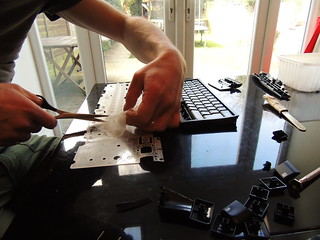
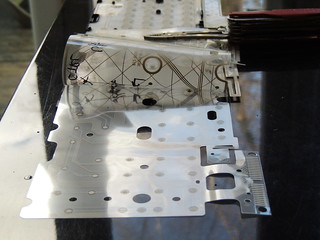
Sadly, I managed to kill the first board by some rather unsubtle trimming (subtltey is not really my thing), so take two was rather more careful. Trim the plastic and just fold the silicone and printed acetate key-press sheets...
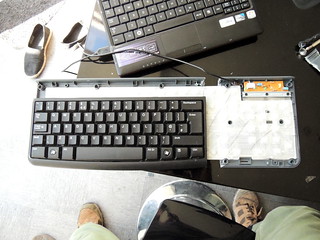
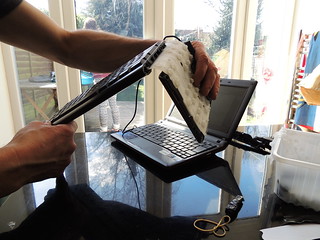
There are two sheets of contacts, separated by a masking sheet. The top sheet has a matrix of electrodes which can connect to corresponding contacts on the bottom sheet. In the middle, the masking sheet has holes that control which contacts can touch. Before folding the sheets, the contacts for any keys that need to be neutralised (like CTRL or WINDOWS or ALT) need to be prevented from touching, and therefore activating anything undesirable!
What you can't really see here is the sellotape used to do this. This was applied accross the sheets to mask the contacts. This needed some filigree-level scalpel work to cut round the screw fittings...
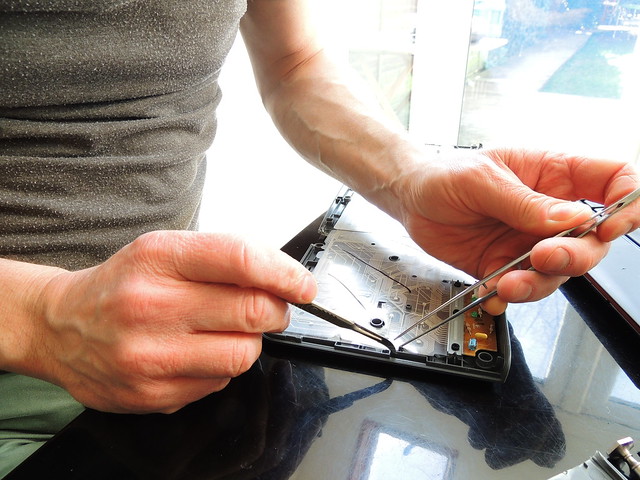
This is the orignal gaffer tape attempt which was too crude...
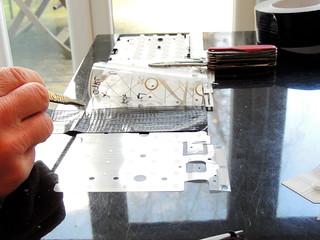

Eventually though, the second attempt worked and the cut down keyboard finally worked..

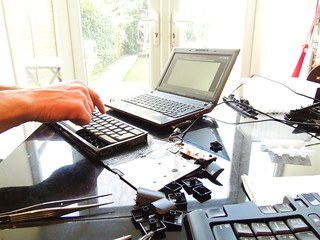
This works, but I still want to individually re-create each key...
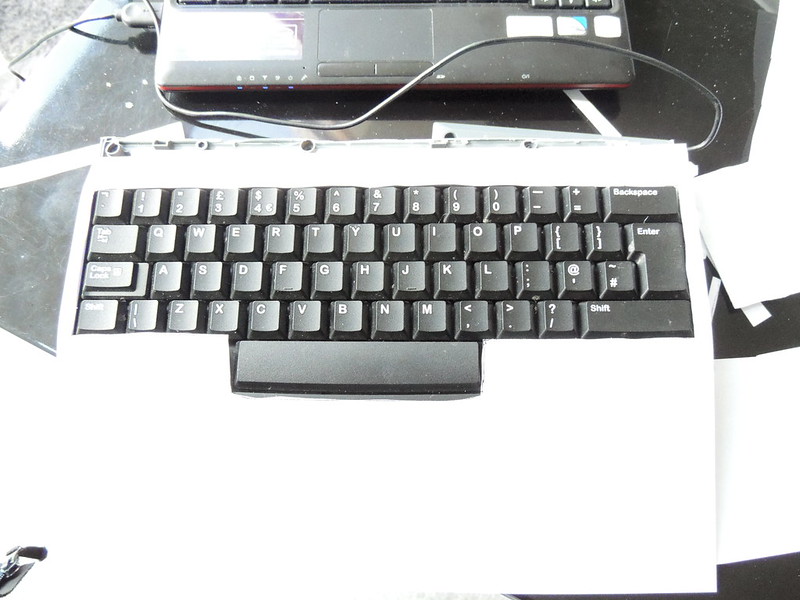

On the other hand, the good thing about testing these possibilities is that you get to hack through plastic in a generally therapeutic way...
Before and after...


To start with, first unscrew everything, to reveal the innards...


The key mechanism is great...


Hacking off the end of the board eighteenth-century-ship style - with a saw, then planimg it down - so enjoyable!


This looked pretty neat in the spring...

But underneath all that, there's a rather sensitive set of plastic circuit matrices. These capture the physical presses of keys and make the corresponding electronic connections


Sadly, I managed to kill the first board by some rather unsubtle trimming (subtltey is not really my thing), so take two was rather more careful. Trim the plastic and just fold the silicone and printed acetate key-press sheets...


There are two sheets of contacts, separated by a masking sheet. The top sheet has a matrix of electrodes which can connect to corresponding contacts on the bottom sheet. In the middle, the masking sheet has holes that control which contacts can touch. Before folding the sheets, the contacts for any keys that need to be neutralised (like CTRL or WINDOWS or ALT) need to be prevented from touching, and therefore activating anything undesirable!
What you can't really see here is the sellotape used to do this. This was applied accross the sheets to mask the contacts. This needed some filigree-level scalpel work to cut round the screw fittings...

This is the orignal gaffer tape attempt which was too crude...


Eventually though, the second attempt worked and the cut down keyboard finally worked..


This works, but I still want to individually re-create each key...

No comments:
Post a Comment